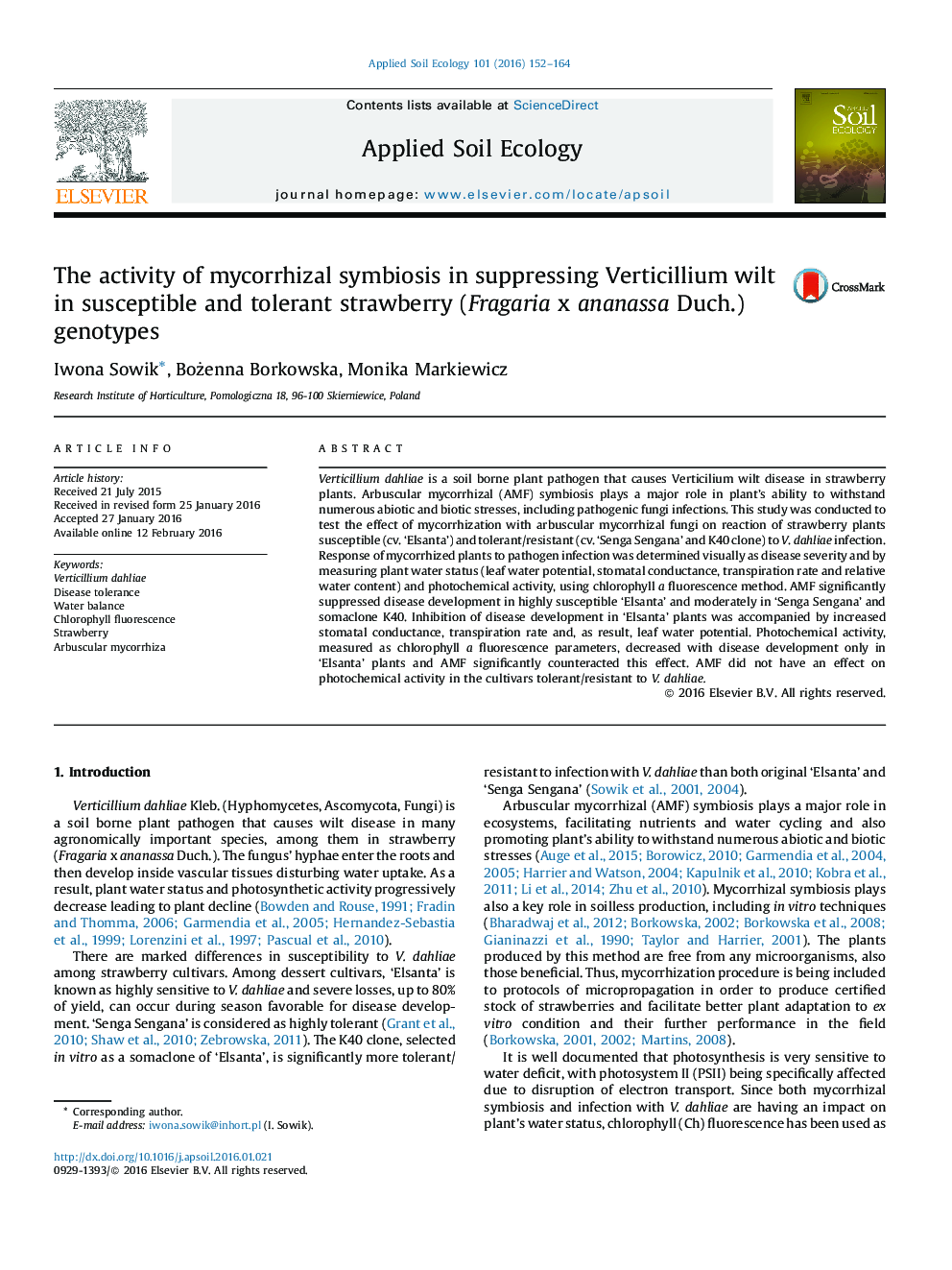| Article ID | Journal | Published Year | Pages | File Type |
|---|---|---|---|---|
| 6297709 | Applied Soil Ecology | 2016 | 13 Pages |
â¢Mycorrhized strawberry plants varying in susceptibility to V. dahliae were studied.â¢Physiological parameters could be used as markers to assess plant sensitivity.â¢AMF suppressed V. dahliae development, the only in susceptible 'Elsanta'.â¢AMF counteracted water deficit and inhibited photochemical activity in 'Elsanta'.â¢Desired effect of AMF may be obtained only for cultivars susceptible to V. dahliae.
Verticillium dahliae is a soil borne plant pathogen that causes Verticilium wilt disease in strawberry plants. Arbuscular mycorrhizal (AMF) symbiosis plays a major role in plant's ability to withstand numerous abiotic and biotic stresses, including pathogenic fungi infections. This study was conducted to test the effect of mycorrhization with arbuscular mycorrhizal fungi on reaction of strawberry plants susceptible (cv. 'Elsanta') and tolerant/resistant (cv. 'Senga Sengana' and K40 clone) to V. dahliae infection. Response of mycorrhized plants to pathogen infection was determined visually as disease severity and by measuring plant water status (leaf water potential, stomatal conductance, transpiration rate and relative water content) and photochemical activity, using chlorophyll a fluorescence method. AMF significantly suppressed disease development in highly susceptible 'Elsanta' and moderately in 'Senga Sengana' and somaclone K40. Inhibition of disease development in 'Elsanta' plants was accompanied by increased stomatal conductance, transpiration rate and, as result, leaf water potential. Photochemical activity, measured as chlorophyll a fluorescence parameters, decreased with disease development only in 'Elsanta' plants and AMF significantly counteracted this effect. AMF did not have an effect on photochemical activity in the cultivars tolerant/resistant to V. dahliae.
